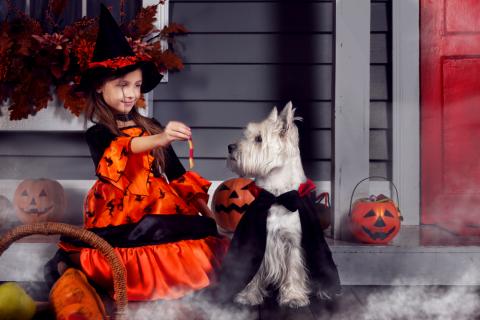Common sense says that if you have a lot more people walking, often in dark costumes, and just as many people driving, plus more people drinking alcohol than would otherwise occur on a Tuesday, pedestrian fatalities will go up.
Common sense is right. They will.
But from a relative risk point of view, Halloween is a really safe evening. National Highway Traffic Safety Administration data of Halloween during a 42-year period (1975 through 2016 inclusive) showed that between the hours of 5 p.m. and 11:59 p.m., pedestrian fatalities on Halloween were higher than during the same hours one week earlier (October 24th) and one week later (November 7th) but so slightly it isn't a concern. It isn't a real worry because on Halloween there are an extra 40,000,000 children walking around.
In the analysis, there were 608 pedestrian deaths on Halloween and 851 total for the two evenings in the other weeks combined. Halloween has 200 more deaths than those other days, but that is with 40,000,000 additional people walking. Certainly no reason to declare a War on Fun and limit Halloween to daylight hours, or listen to the American Academy of Pediatrics and ruin costumes with bright orange vests on top.
The relative risk is only equal to four more pedestrian deaths each year, in a population of 332,000,000. Importantly, the analysis showed that the risk has gone down. The absolute risk most recently was almost half what it was in the first decade of the analysis.
Of course, no parent wants their child to be a statistic, so be more cautious with 4-year-olds than you would those ages 8 or 12, but having kids out with friends is a good activity during a period when only 3 percent of kids are meeting activity level guidelines. The last thing we need is ways to limit activity even more.
Citation: Staples JA, Yip C, Redelmeier DA. Pedestrian Fatalities Associated With Halloween in the United States. JAMA Pediatr. October 30, 2018. doi:10.1001/jamapediatrics.2018.4052



Comments